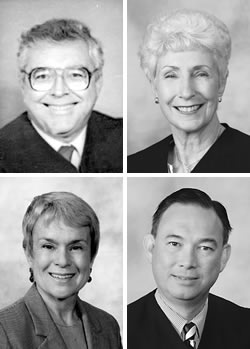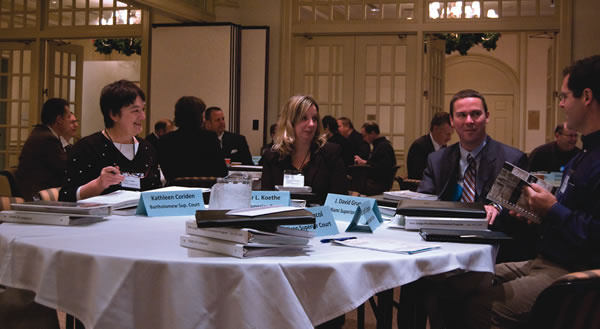
Fulton Circuit Court Judge Douglas B. Morton began his judicial career on January 1, 1979. He had a typewriter in his office, rarely saw a pro se litigant in a family law case, can remember only two female judges attending the Indiana Judicial Conference, and his annual salary was $23,750. It would be a gross understatement to say that he has seen changes to the judicial system since he was first elected in November 1978.
Judge Morton is leaving the bench at the end of 2008 along with thirty one of his colleagues. It is the end of an era for Indiana courts with the largest bench exodus in recent memory, and perhaps in Indiana history. He cannot recall so many judges stepping down at one time. These thirty-two judges have 642 years of combined judicial experience. During those thousands of days of donning the black robes and stepping onto the bench, these judges have presided over criminal and civil jury trials, adoptions, divorces, and small claims cases. These devoted public servants have countless memories and many stories to tell based on activities both in and out of their courtrooms.
Marion Superior Court Judge Patricia Gifford is one of only eight retiring judges who began a judicial career in the 1970’s. She is confident in the ability of new judges, but she does believe that a great deal of institutional knowledge will be lost when she and the other long time servants leave their courtrooms. “I’ve had many people ask me if I will be available by phone.” Judge Gifford is not surprised by these requests and she knows she can be an important sounding board, especially when judges are trying to find new ways to operate the courts more efficiently. “I can say: we tried that, here’s what worked, here’s what didn’t.”
Judges leaving the bench do reflect on the attempts at court reform, and the successes and the failures. Many judges cite problem solving courts as an example of what did work. The Honorable Cecile Blau, Clark County Superior Court Judge, believes her work with these courts is an example of where she made the biggest difference for her county. “Sometimes we saw defendants who were addicts first and criminals second.” Judge Blau is proud she brought the first Drug Court to Clark County. She believes using alternative sentencing allowed her to compassionately, effectively and efficiently handle many of the criminal cases brought before her.
For Judge Michael Witte of Dearborn County, the most significant progress made over the past quarter century is the unification of key court functions. “Advancing beyond a judiciary of individual fiefdoms has been advantageous in achieving legislative initiatives and in defending the challenges sometimes raised by local government.” He points to the current salary structure, the uniform case management system, and statewide judicial education as examples of how the judicial branch has grown to a position of strength under the leadership of Chief Justice Randall Shepard.
The Indiana Judicial Center welcomed new judges to the bench with an orientation program on December 10 and 11. It was an opportunity for these judicial officers to begin their own path of service. Like anyone in a new position, they will get plenty of advice. Judge Gifford offers the practical, “learn how to be a good administrator and run an office.” Judge Blau points to the simple, “Be a good listener.” Judge Morton offers a bit of wisdom and truth, “Be yourself, your state is counting on you.”
